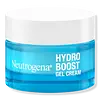What's inside
What's inside
 Key Ingredients
Key Ingredients

 Benefits
Benefits

 Concerns
Concerns

 Ingredients Side-by-side
Ingredients Side-by-side

Water
Skin ConditioningGlycerin
HumectantIsostearyl Neopentanoate
EmollientButylene Glycol
HumectantGlyceryl Stearate
EmollientPEG-100 Stearate
Dimethicone
EmollientCetearyl Alcohol
EmollientAcetyl Hexapeptide-8
HumectantAcetyl Octapeptide-3
HumectantAminopropyl Ascorbyl Phosphate
AntioxidantPalmitoyl Tetrapeptide-7
Skin ConditioningAlgae Extract
EmollientSodium Hyaluronate
HumectantPalmitoyl Hexapeptide-12
Skin ConditioningSigesbeckia Orientalis Extract
Skin ConditioningLactis Proteinum
Skin ConditioningDipeptide Diaminobutyroyl Benzylamide Diacetate
Skin ConditioningAcetyl Glucosamine
Skin ConditioningCaffeine
Skin ConditioningPalmitoyl Tripeptide-1
Skin ConditioningGlycine Soja Seed Extract
Skin ConditioningCetearyl Glucoside
EmulsifyingTocopheryl Acetate
AntioxidantIsohexadecane
EmollientPetrolatum
EmollientCaprylyl Glycol
EmollientGlycereth-26
HumectantAcrylates/C10-30 Alkyl Acrylate Crosspolymer
Emulsion StabilisingTromethamine
BufferingGlyceryl Polymethacrylate
PEG-8
HumectantPolysorbate 20
EmulsifyingHexylene Glycol
EmulsifyingPolysorbate 80
EmulsifyingCarbomer
Emulsion StabilisingAcrylamide/Sodium Acryloyldimethyltaurate Copolymer
Emulsion StabilisingSorbitan Oleate
EmulsifyingCetyl Alcohol
EmollientSodium Citrate
BufferingDisodium EDTA
Phenoxyethanol
PreservativePotassium Sorbate
PreservativeSodium Benzoate
MaskingWater, Glycerin, Isostearyl Neopentanoate, Butylene Glycol, Glyceryl Stearate, PEG-100 Stearate, Dimethicone, Cetearyl Alcohol, Acetyl Hexapeptide-8, Acetyl Octapeptide-3, Aminopropyl Ascorbyl Phosphate, Palmitoyl Tetrapeptide-7, Algae Extract, Sodium Hyaluronate, Palmitoyl Hexapeptide-12, Sigesbeckia Orientalis Extract, Lactis Proteinum, Dipeptide Diaminobutyroyl Benzylamide Diacetate, Acetyl Glucosamine, Caffeine, Palmitoyl Tripeptide-1, Glycine Soja Seed Extract, Cetearyl Glucoside, Tocopheryl Acetate, Isohexadecane, Petrolatum, Caprylyl Glycol, Glycereth-26, Acrylates/C10-30 Alkyl Acrylate Crosspolymer, Tromethamine, Glyceryl Polymethacrylate, PEG-8, Polysorbate 20, Hexylene Glycol, Polysorbate 80, Carbomer, Acrylamide/Sodium Acryloyldimethyltaurate Copolymer, Sorbitan Oleate, Cetyl Alcohol, Sodium Citrate, Disodium EDTA, Phenoxyethanol, Potassium Sorbate, Sodium Benzoate
Water
Skin ConditioningGlycerin
HumectantDimethicone
EmollientCetearyl Olivate
Sorbitan Olivate
EmulsifyingSodium Hyaluronate
HumectantSerine
MaskingGlycine
BufferingAlanine
MaskingThreonine
Arginine
MaskingProline
Skin ConditioningLysine Hcl
Skin ConditioningGlutamic Acid
HumectantSodium PCA
HumectantPCA
HumectantSodium Lactate
BufferingUrea
BufferingSodium Chloride
MaskingCitric Acid
BufferingBetaine
HumectantAllantoin
Skin ConditioningFructose
HumectantMaltose
MaskingTrehalose
HumectantGlucose
HumectantPentylene Glycol
Skin ConditioningSynthetic Beeswax
Emulsion StabilisingPolyacrylate Crosspolymer-6
Emulsion StabilisingDimethicone Crosspolymer
Emulsion StabilisingDimethiconol
EmollientEthylhexylglycerin
Skin ConditioningCaprylyl Glycol
EmollientSodium Hydroxide
BufferingWater, Glycerin, Dimethicone, Cetearyl Olivate, Sorbitan Olivate, Sodium Hyaluronate, Serine, Glycine, Alanine, Threonine, Arginine, Proline, Lysine Hcl, Glutamic Acid, Sodium PCA, PCA, Sodium Lactate, Urea, Sodium Chloride, Citric Acid, Betaine, Allantoin, Fructose, Maltose, Trehalose, Glucose, Pentylene Glycol, Synthetic Beeswax, Polyacrylate Crosspolymer-6, Dimethicone Crosspolymer, Dimethiconol, Ethylhexylglycerin, Caprylyl Glycol, Sodium Hydroxide
 Reviews
Reviews

Ingredients Explained
These ingredients are found in both products.
Ingredients higher up in an ingredient list are typically present in a larger amount.
Caprylyl Glycol is a humectant and emollient, meaning it attracts and preserves moisture.
It is a common ingredient in many products, especially those designed to hydrate skin. The primary benefits are retaining moisture, skin softening, and promoting a healthy skin barrier.
Though Caprylyl Glycol is an alcohol derived from fatty acids, it is not the kind that can dry out skin.
This ingredient is also used as a preservative to extend the life of products. It has slight antimicrobial properties.
Learn more about Caprylyl GlycolDimethicone is a type of synthetic silicone created from natural materials such as quartz.
What it does:
Dimethicone comes in different viscosities:
Depending on the viscosity, dimethicone has different properties.
Ingredients lists don't always show which type is used, so we recommend reaching out to the brand if you have questions about the viscosity.
This ingredient is unlikely to cause irritation because it does not get absorbed into skin. However, people with silicone allergies should be careful about using this ingredient.
Note: Dimethicone may contribute to pilling. This is because it is not oil or water soluble, so pilling may occur when layered with products. When mixed with heavy oils in a formula, the outcome is also quite greasy.
Learn more about DimethiconeGlycerin is already naturally found in your skin. It helps moisturize and protect your skin.
A study from 2016 found glycerin to be more effective as a humectant than AHAs and hyaluronic acid.
As a humectant, it helps the skin stay hydrated by pulling moisture to your skin. The low molecular weight of glycerin allows it to pull moisture into the deeper layers of your skin.
Hydrated skin improves your skin barrier; Your skin barrier helps protect against irritants and bacteria.
Glycerin has also been found to have antimicrobial and antiviral properties. Due to these properties, glycerin is often used in wound and burn treatments.
In cosmetics, glycerin is usually derived from plants such as soybean or palm. However, it can also be sourced from animals, such as tallow or animal fat.
This ingredient is organic, colorless, odorless, and non-toxic.
Glycerin is the name for this ingredient in American English. British English uses Glycerol/Glycerine.
Learn more about GlycerinSodium Hyaluronate is hyaluronic acid's salt form. It is commonly derived from the sodium salt of hyaluronic acid.
Like hyaluronic acid, it is great at holding water and acts as a humectant. This makes it a great skin hydrating ingredient.
Sodium Hyaluronate is naturally occurring in our bodies and is mostly found in eye fluid and joints.
These are some other common types of Hyaluronic Acid:
Learn more about Sodium HyaluronateWater. It's the most common cosmetic ingredient of all. You'll usually see it at the top of ingredient lists, meaning that it makes up the largest part of the product.
So why is it so popular? Water most often acts as a solvent - this means that it helps dissolve other ingredients into the formulation.
You'll also recognize water as that liquid we all need to stay alive. If you see this, drink a glass of water. Stay hydrated!
Learn more about Water